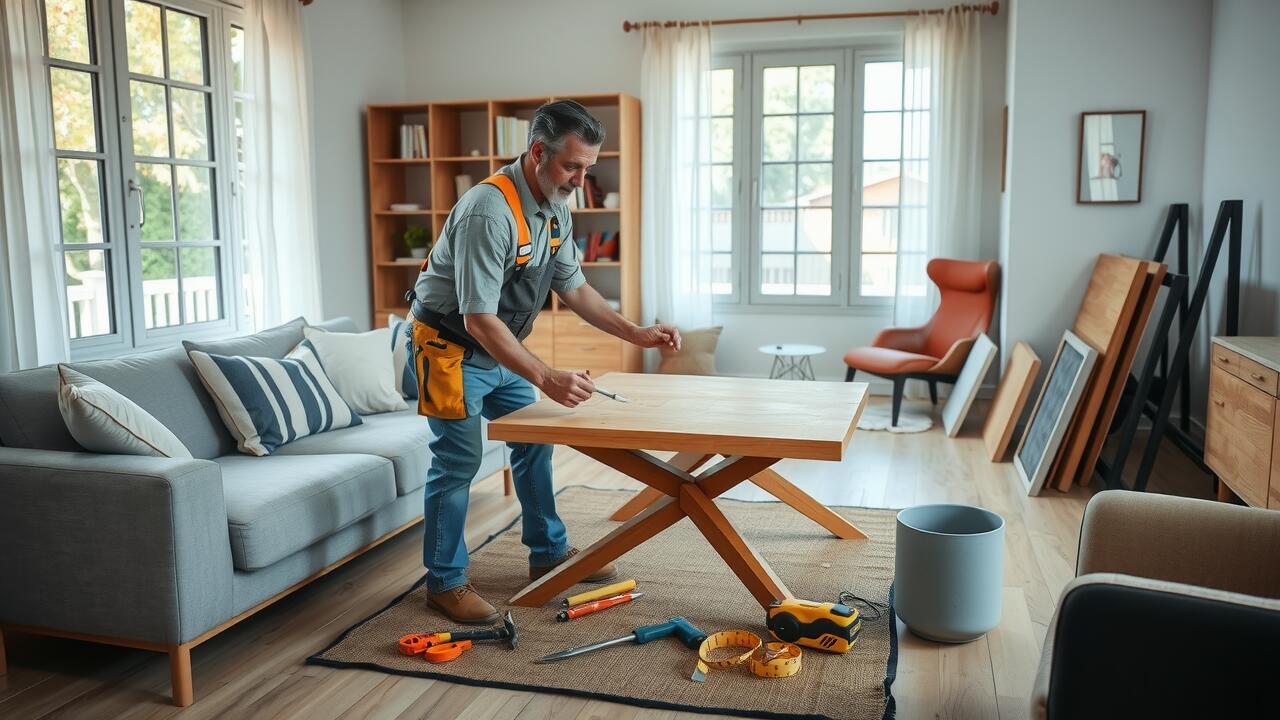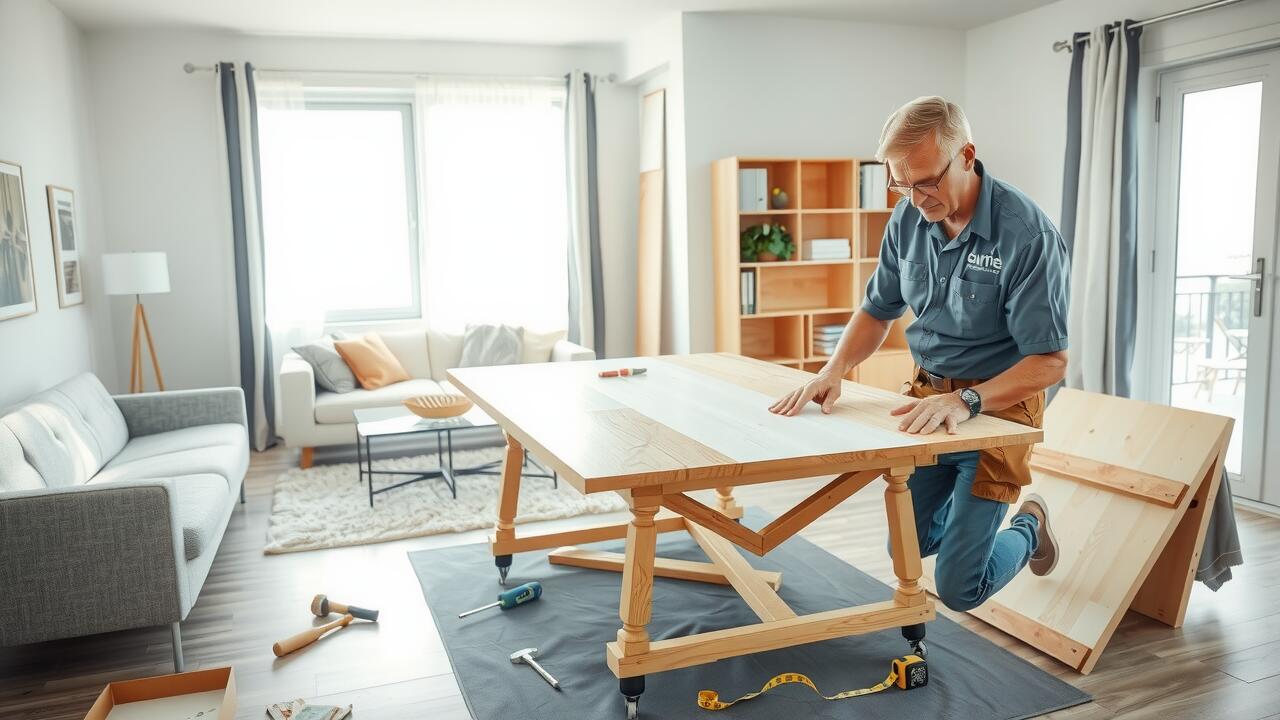
Table Of Contents
Removing Cushioning and Accessories
Removing cushioning and accessories is a crucial first step in the furniture disassembly process. Start by carefully inspecting the piece for any removable components, such as cushions, pillows, or decorative elements. These parts should be taken off gently to avoid damaging the underlying structure. Depending on the design, some cushions might be attached via Velcro or zippers, making them easier to detach. Keeping these pieces organized will help streamline the reassembly later, especially if you're considering Furniture Assembly and Disassembly in Bethesda, Maryland, where proper handling can impact the quality of your service.
Before proceeding with the main frame, take note of how accessories are attached. Screws, clips, or brackets might hold some elements in place. Use appropriate tools to unscrew or unclip these components without forcing them. Documenting the process through photos can also be beneficial for reference during reassembly. Careful management of these accessories not only prevents loss but also maintains the integrity of both the furniture and its components.
Safely Detaching Upholstery and Other Elements
To safely detach upholstery and other elements from your furniture, begin by carefully removing any screws or fasteners that hold the coverings in place. Use a screwdriver suited to the type of screws involved, ensuring that you do not strip the heads. As you remove elements, keep them organized by placing them in a labeled container. This method prevents confusion during reassembly and ensures that no pieces are lost.
If the upholstery is stapled, use a staple remover or flat-head screwdriver to gently pry the staples out without damaging the fabric or the underlying structure. Be cautious with any decorative elements like tacks or trim as well. These can be easily misplaced and often require precision in handling. For anyone considering Furniture Assembly and Disassembly in Bethesda, Maryland, proper techniques in dealing with upholstery can save both time and frustration in the long run.
Disassembling Step by Step
Disassembling furniture requires a methodical approach to ensure all parts are handled correctly and safely. Begin by examining the overall structure of the furniture piece you intend to take apart. Identify the primary joints and fasteners used in its construction. Clear out any drawers or detachable components before proceeding. Taking inventory of all pieces will help you understand the disassembly order and avoid losing important components.
As you work through the disassembly, maintain a systematic sequence. A good practice is to document each step, either through notes or photographs, which will aid in reassembly later. Utilizing clear containers for screws and small parts will streamline the organization process. For those in the area, local services such as Furniture Assembly and Disassembly in Bethesda, Maryland, can assist if needed, ensuring your disassembly is both efficient and secure.
Following a Systematic Approach
A systematic approach to disassembling furniture not only simplifies the process but also minimizes the risk of damage. Start by gathering essential tools such as screwdrivers, wrenches, and pliers. Carefully inspect each piece of furniture before beginning. Take note of any hidden screws or brackets that may need attention. Documenting the disassembly process can be highly beneficial. Using your phone to take pictures ensures that you can remember how things go back together.
When disassembling, work in a designated area to keep all parts organized. Label bags with screws and small components to prevent them from getting lost. If you're located in Bethesda, Maryland, seeking professional assistance is always an option; experts specializing in furniture assembly and disassembly can ensure the job is done efficiently. Taking these steps helps streamline the task, making it easier to reassemble the furniture later on.
Handling Fragile Components
When tackling furniture disassembly, special attention must be given to fragile components. Items such as glass tabletops or decorative mirrors require extra caution during the process. Before starting, ensure all surrounding areas are clear to minimize the risk of accidental damage. Gather protective materials like bubble wrap and blankets to wrap these items securely, reducing the chance of scratches or breaks.
While removing fragile parts, it is essential to work slowly and methodically. Label each piece clearly as you disassemble to keep track of what goes together. This organization becomes particularly crucial if you are planning to engage in Furniture Assembly and Disassembly in Bethesda, Maryland. Taking the time to handle these components with care will ultimately lead to a smoother reassembly once you're ready.
Tips for Carefully Managing Delicate Parts
When disassembling furniture, the risk of damaging fragile components increases. Small parts such as drawer handles or delicate embellishments require extra care during the process. To protect these items, use soft cloths or bubble wrap when wrapping them. Labeling each component can help keep everything organized and prevent misplacement, ensuring that no piece gets lost or damaged.
During the removal of fragile elements, work slowly and methodically. Avoid using excessive force, as this can lead to cracks or breaks. Utilizing the right tools is essential; consider using plastic pry tools instead of metal ones to reduce the risk of chipping or scratching surfaces. For anyone unfamiliar with techniques for Furniture Assembly and Disassembly in Bethesda, Maryland, researching specific strategies for fragile items can enhance the safety of the process and prolong the life of the furniture.
FAQS
What tools do I need for furniture disassembly?
Common tools include screwdrivers (flathead and Phillips), pliers, an Allen wrench, a rubber mallet, and possibly a utility knife for cutting any adhesives or fabric.
How can I safely detach upholstery from furniture?
To safely detach upholstery, start by removing staples or tacks using pliers or a staple remover. Work slowly to avoid damaging the fabric or the underlying material.
What is the best way to keep track of small hardware during disassembly?
Use small containers or ziplock bags to store screws, bolts, and other small hardware. Label each container according to its corresponding piece of furniture to make reassembly easier.
How should I manage fragile components during disassembly?
Handle fragile components, such as glass shelves or delicate wooden parts, with care. Use padding or blankets to protect them from scratches or breaks, and consider having a helper to support heavier items.
Is it necessary to take pictures during the disassembly process?
Yes, taking pictures can be extremely helpful. Documenting the disassembly process with photos ensures you remember how everything fits together when it’s time to reassemble the furniture.
